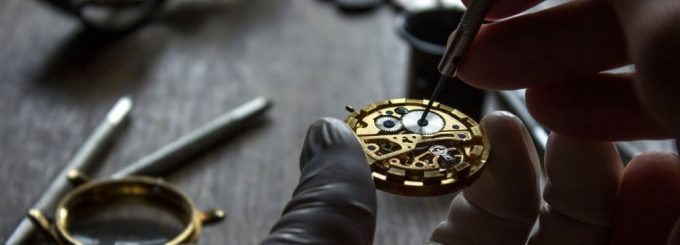How and Why Mechanical Resonance is used in High End Watches

One of the hottest trends in high end watchmaking is mechanical resonance. But what is it, how does it work and why is it all the rage? Keep reading to find out.
A Brief History of Mechanical Resonance
This phenomenon was first discovered by Christian Huygens, a Dutch physicist and mathematician that lived in the 17th century. He discovered the resonance phenomenon while observing oscillations between 2 pendulums which hung along a wall nearby. Regardless of how the pendulum clocks started, within thirty minutes, they would always swing in the exact opposite direction of one another.
Although it took time for Huygens to develop a mathematical understanding of what he saw (differential calculus didn’t exist yet), he recognized that miniature vibrations within the wood bar where the vintage clocks hung was probably responsible. By the conclusion of the eighteen century, Antide Janvier, a clockmaker from France, came up with an idea to construct 2 complete movements featuring dual precision escapements then positioning them close to one another, which ensured the 2 pendulums would hang from identical construction. His plan worked, as the pendulums recovered energy that was dissipated from one another then started to beat as one, thus initiating resonance and increasing precision.
How Mechanical Resonance Works
Mechanical based resonance entails a phenomenon which may affect the majority of objects. In truth, any object which is free to vibrate by itself has an individual vibration rate. This is sometimes referred to as an item’s resonant or natural frequency and it is determined by multiple variables, such as object shape, composition and size. Because of resonance, even a vibration which is quite weak within one object might drive a different object to begin oscillating with higher amplitude if its oscillation frequency is aligned with the natural frequency of the other object.
For instance, within an automobile the engine might cause vibration in a separate component. This vibration results since the component has natural frequency which is equal to natural frequency produced by the engine vibration. As such, this component is referred to as being in resonance with its engine.
Why Mechanical Resonance is a Big Deal for Watchmakers
The ability to accurately adjust distances between dual regulators is a key advantage for watch design, because it can tune sophisticated systems while inciting resonance. Additionally, it provides stabilizing effects for timekeeping, energy conservation as well as negative effects reduction for timekeeping precision because of external perturbation.
For instance, an external shock which slows down one of a watch’s balances will increase the other’s speed at an equal amount; both the balances will then try to return to resonance, through averaging as well as minimizing the external effects when seeking their rhythm.
However, the reason why mechanical resonance is still only used in high end luxury watches rather than lower end models is because resonance clutched springs are complex mechanisms, with a shape so intricate that it usually has to be created in-house. And it can take up to twenty four months just to perfect its spring so that it manifests the ideal form needed to attach dual oscillator sets.


